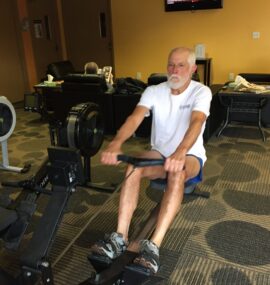Tiny amounts of all-out exercise produce big results
Increase VO2 max with minimal time
Interval training has experienced a recent surge in academic research. Canadian researchers Jenna Gillen and Martin Gibala distinguish among several types of interval training, which can lead to different cardiovascular outcomes. High-intensity interval training involves short, relatively intense but sub-maximal periods of exertion that elevate heart rate to 80% or more of maximum. Brief high-intensity interval training sessions (10 minutes) can produce comparable or better cardiovascular benefits than longer (30 minute) moderate-intensity interval training sessions.
What accounts for the high prevalence of physical inactivity among Americans, in spite of frequent exhortations to become more active? One oft cited reason is lack of time. Sprint interval training involves short (less than one minute) bursts of intense exercise interspersed with short periods of low-intensity recovery. Recent studies show that sprint interval training can improve cardiorespiratory fitness comparable to that of traditional exercise done at lower intensity for longer periods of time.
A recent study by Canadian researchers pitted a form of sprint interval training (SIT) against moderate-intensity continuous training (MICT) over a 12-week period. SIT consisted of 10-minute sessions thrice weekly. Each session include three 20-second, “all-out” bursts flanked with 2-minute low-exertion recovery periods plus an initial warm-up and ending with a cool-down. The 50-minute MICT session included 45 minutes of continuous cycling at 70 percent of maximum heart rate plus warm up and cool-down thrice weekly.
Both SIT and MICT improved cardiorespiratory fitness by 19 percent, while that of that of the control group remained unchanged. Blood sugar control increased by 53 and 34 percent, respectively, while that of the control group remained unchanged. Muscle enzyme activity increased 48 and 27 percent for SIT and MICT, respectively, while the control group changed little. With only a weekly time investment of 30 minutes, SIT produced similar or better results compared to MICT, which required 150 minutes per week. The much shorter time required for SIT might induce inactive persons to give it a try.
Inspired by the work of the Canadian researchers and wanting to increase my cardiorespiratory fitness before resuming my Continental Divide Trail hike in July, I started a modified version of SIT two months ago. Twice a week, in conjunction with my other exercise at the gym, I spend 7 minutes in each SIT session on a rowing machine. Prior to each SIT session, I’ve already warmed up doing leg exercises.
Here’s the SIT protocol I use: 1) One minute of slow rowing (about 70 watts of power), 2) 20 seconds of rowing as hard as I can (12 pulls on the handle), 3) 1 minute and 40 seconds of slow-rowing recovery maxing out at about 70 watts, 4) 20 seconds of rowing as hard as I can, 5) 1 minute and 40 seconds of recovery maxing out at about 70 watts, 6) 20 seconds of rowing as hard as I can, and 7) 1 minute and 40 seconds of recovery maxing out at 70 watts. Then I move on to upper body exercises.
During the two months, my peak power during my 20-second, all-out sprints increased from about 240 to 280 watts. My average power during the 20 seconds increased from about 215 to 245 watts. This from only 8 sessions! Given that improving your cardiorespiratory fitness may be the single best thing you can do to boost your health and well-being, can you “SIT” for 14 minutes a week?








